Gabbro is a coarse-grained and usually dark-colored igneous rock. It is an intrusive rock. It means that it formed as magma cooled slowly in the crust. Igneous rocks with similar composition are basalt (extrusive equivalent of gabbro) and diabase (the same rock type could be named dolerite or microgabbro instead).
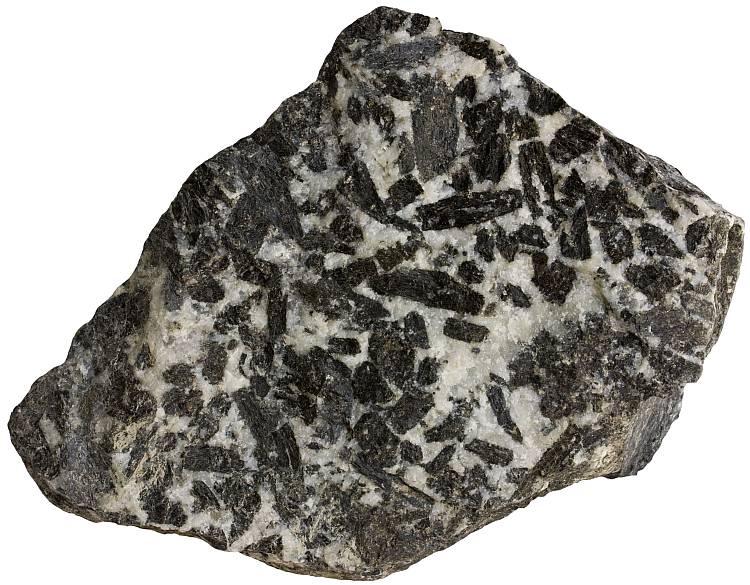
Gabbro with large augite phenocrysts embedded in white plagioclase. These two are the principal minerals in this rock. Tangen, Norway. Width of sample 11 cm.
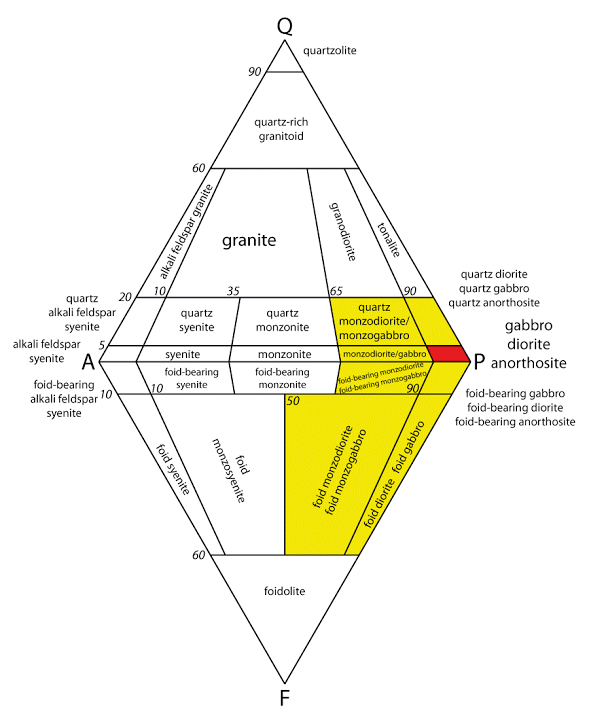
Gabbro (red) on the QAPF diagram which is used to name most plutonic igneous rocks. Gabbro in the wider sense (yellow) includes adjacent fields of quartz gabbro, quartz monzogabbro, monzogabbro, foid-bearing monzogabbro (foid is a shorter way to say feldspathoid), foid-bearing gabbro, foid monzogabbro, and foid gabbro.
The most important mineral groups that make up this rock type are plagioclase and pyroxene. Plagioclase usually predominates over pyroxene. Plagioclase is sodium-calcium feldspar. It contains more calcium than sodium in gabbro. If there is more sodium in the plagioclase, then the rock type is named diorite. Diorite is usually lighter in color and contains more amphiboles than pyroxenes.
“Gabbro” in the strict sense of the term is an intrusive rock that is chiefly composed of monoclinic pyroxene (clinopyroxene, abbreviated Cpx) and plagioclase. If more than 5% of Cpx is replaced with orthorhombic pyroxene (orthopyroxene, abbreviated Opx), the rock is named gabbronorite. If more than 95% of the pyroxene is Opx, then we have norite. These rocks are all collectively called gabbroic rocks. Sometimes the term “gabbro” is used loosely to include them all. Rocks that contain more than 90% pyroxene is pyroxenite. Gabbroic rocks may contain small amounts of quartz (up to 5%). If there is more quartz present, the rock must be named quartz gabbro. If quartz makes up more than 20%, then the rock is one of granitoids1.
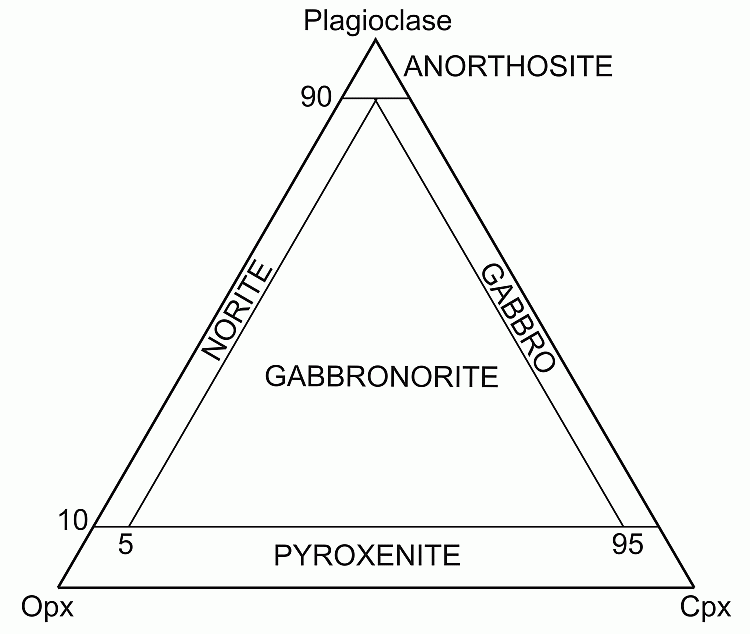
The classification scheme for gabbroic rocks without taking into account olivine and feldspathoids. Cpx is clinopyroxene, Opx is orthopyroxene, Plag is plagioclase. Rocks that contain less than 10% plagioclase are ultramafic (pyroxenite if pyroxenes are the dominant minerals). Pyroxene is almost exclusively clinopyroxene and norite is conversely rich in orthopyroxene. Anorthosite is almost monomineralic plagioclase-rock.
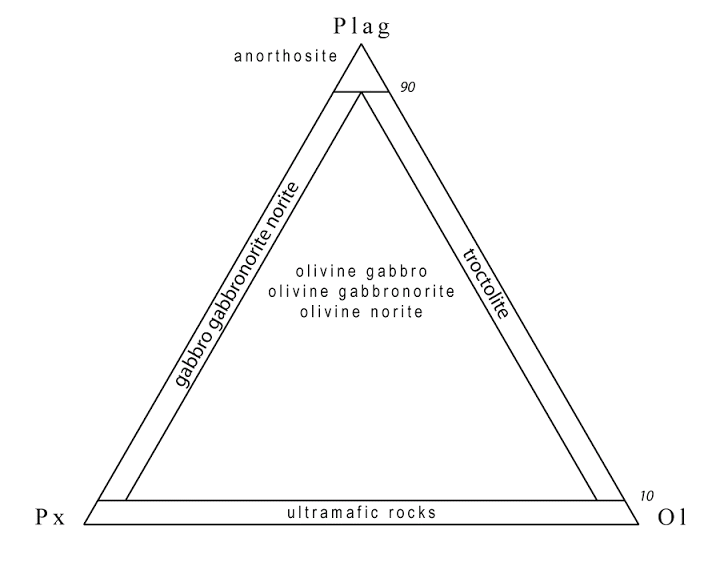
The classification scheme of olivine-bearing (>10%) gabbroic rocks. “Olivine” should be added to the rock name if it contains more than 10% of it. Gabbroic rock that contains almost no pyroxene is troctolite.
There are even more varieties possible. Olivine can be present or feldspathoids just like in basalt. Hence, rock names like nepheline-bearing gabbro or olivine norite are possible. Anorthosite and troctolite are similar rocks also. Anorthosite is almost monomineralic rock — more than 90% of the plagioclase-pyroxene pair is plagioclase. Troctolite contains mostly olivine and plagioclase, pyroxene again forms no more than 10% of the composition.
It is often mentioned that the term “gabbro” was brought into geological terminology by a German geologist Leopold von Buch. It is probably not correct. The term was used by Italian geologist Tozzetti in 1768. The term itself comes from Italy. Von Buch redefined the term in 1810 as a rock composed of diallage and feldspar or saussurite. Saussurite is a mixture of epidote, albite, and other alteration minerals. Saussuritized version can be named metagabbro nowadays because its original composition has clearly been altered by metamorphism. Diallage is not defined as a mineral now, but it is monoclinic pyroxene anyway (either diopside or augite). So we can say that von Buch used the term roughly as we use it today.
Gabbros form in the crust. This is the magma that did not break to the surface to cool as a basalt. These rocks are not as widespread as granitoids, but they are definitely not rare. Gabbroic rocks are usually equigranular (composed of similarly sized grains) mixtures of black, brown or greenish pyroxene and white, gray, or greenish plagioclase. Pyroxenite and other ultramafic rocks are darker- and diorite is lighter-colored.
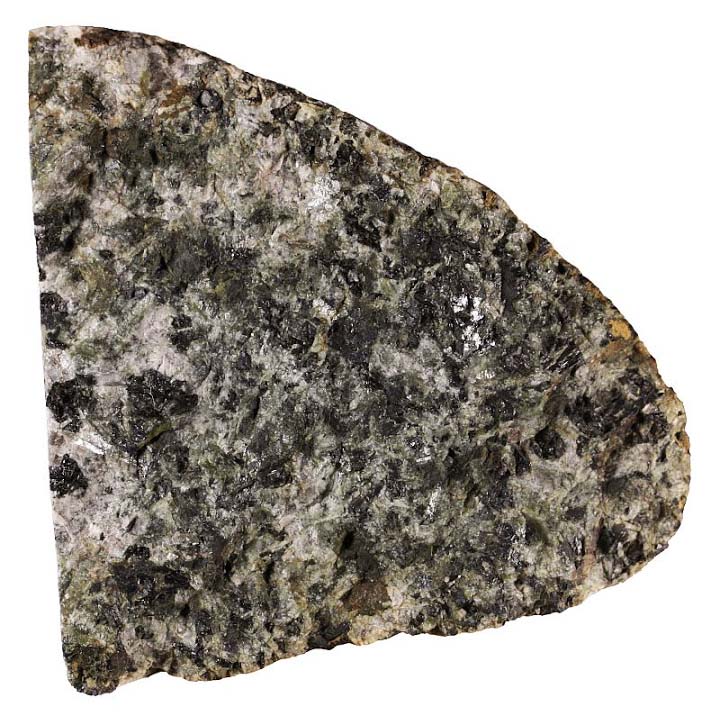
A hand sample from the Isle of Skye in Scotland (Black Cuillin Mountains). It is gabbro in the strict sense because pyroxenes are monoclinic (they have inclined extiction). Width of sample 55 mm.
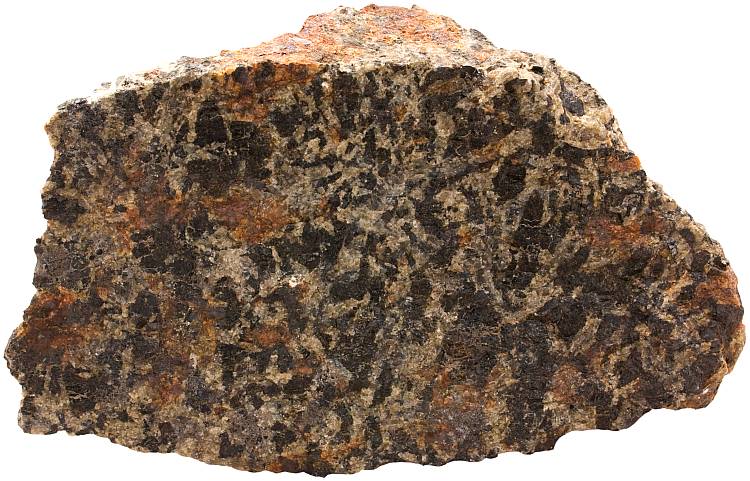
Olivine gabbro. Olivine (weathered orange iddingsite in this sample) may be an important constituent in these rocks. Flakstadøya, the Lofoten Archipelago, Norway. Width of sample 12 cm.
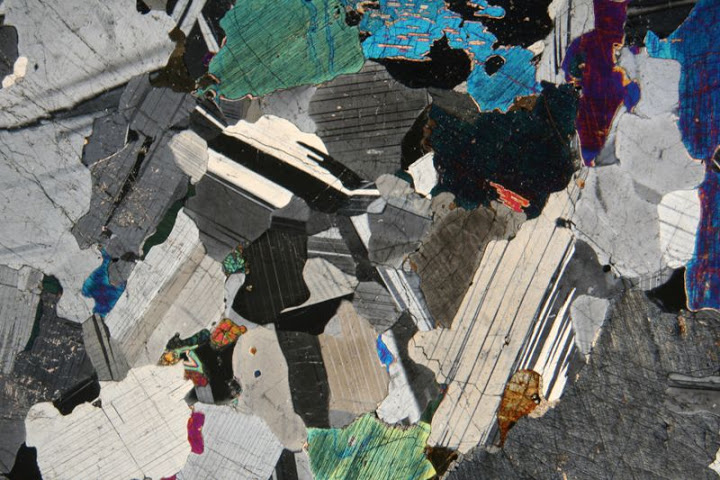
This is how gabbro looks under the polarising microscope (crossed polars). These colors are not real, they are caused by the interference between lightwaves. Plagioclase is striped black-gray-white, pyroxene is colorful, there are some small olivine grains as well. Yellow stripes in blue in the upper part of the image is an intergrowth of two pyroxenes (Opx in Cpx).
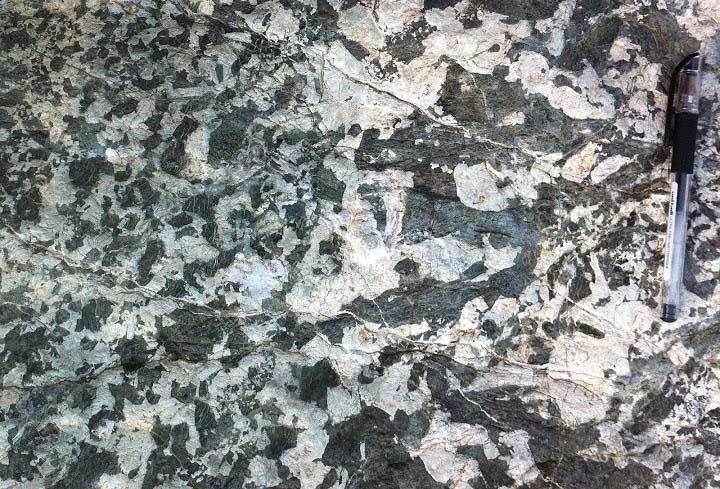
Gabbro pegmatite from Cyprus (the Troodos ophiolite).
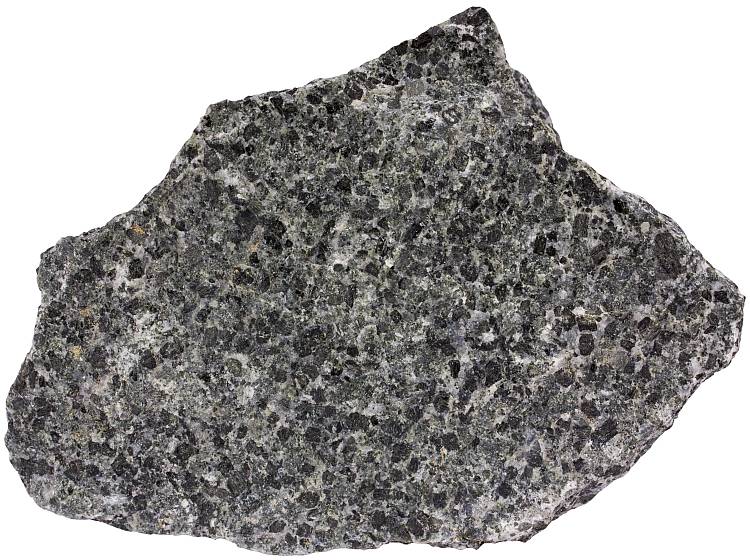
A sample from Tangen, Norway. Width of sample 10 cm.
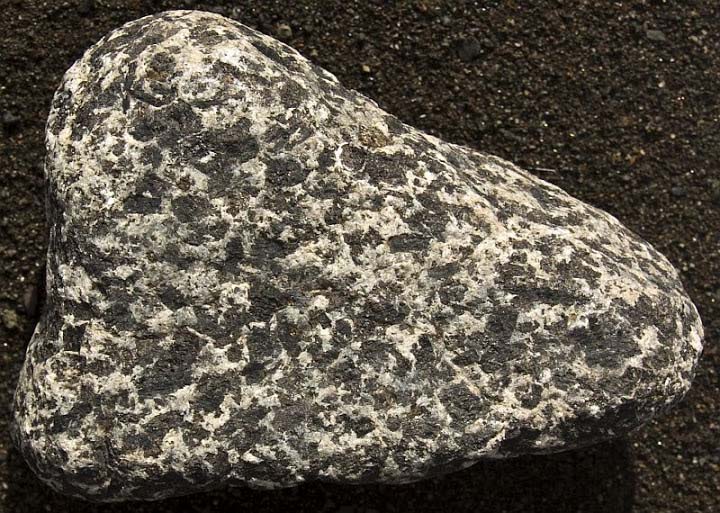
A sample from the Caldera de Taburiente on La Palma (The Canary Islands). La Palma is an oceanic island which is largely composed of volcanic rocks. Deep-seated intrusive rock gabbro is exposed there because of uplift and subsequent deep erosion.
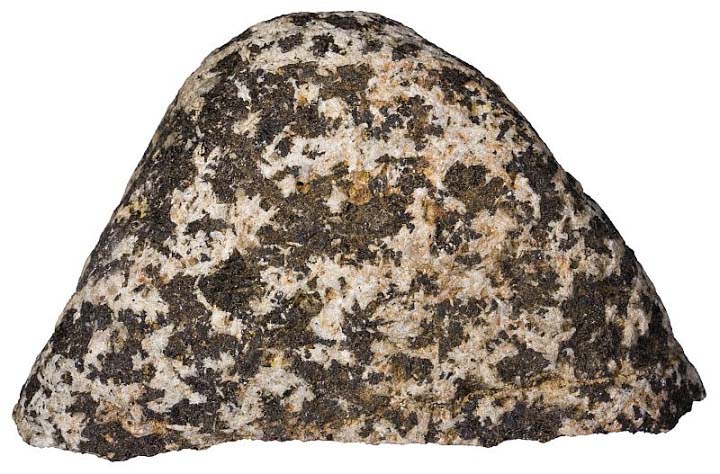
A sample from La Palma. Width of sample 5 cm.
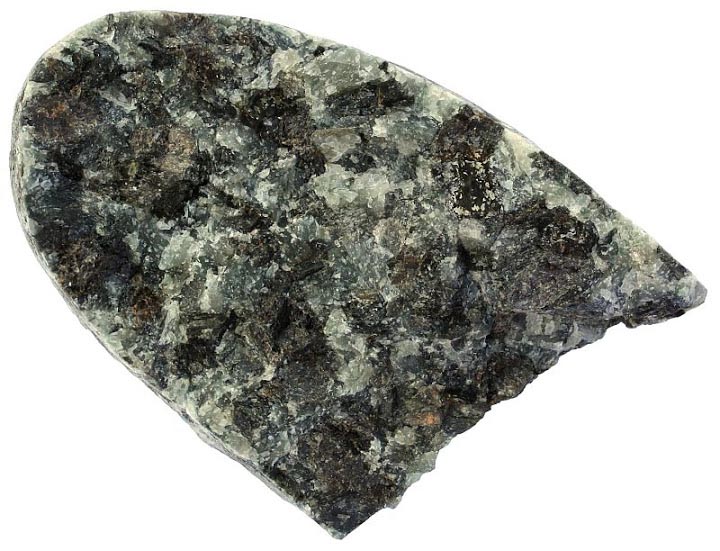
Gabbro from the Troodos ophiolite in Cyprus. Width of sample 7 cm.
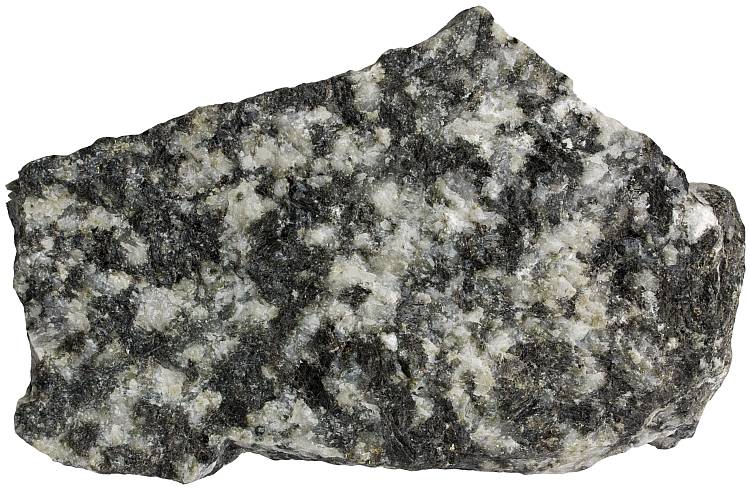
A sample from Tangen, Hedmark, Norway. Width of sample 11 cm.
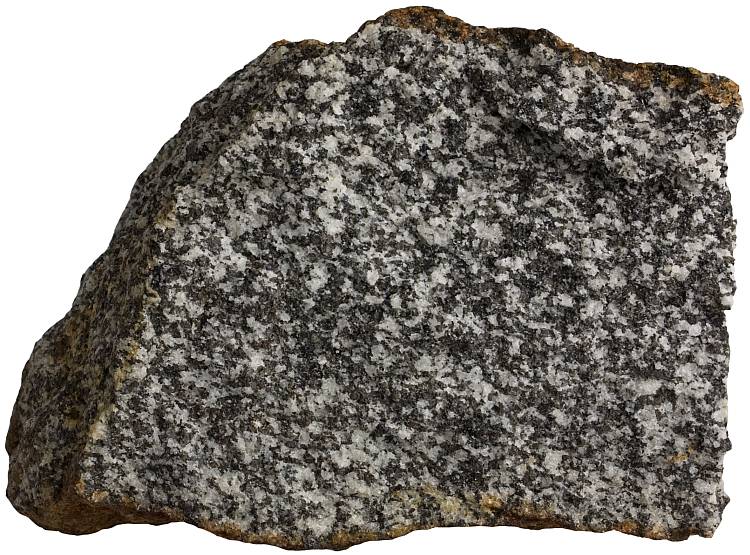
Norite may be very similar to gabbro but contains orthopyroxene, not clinopyroxene. Rogaland, Norway. Width of sample 8 cm.
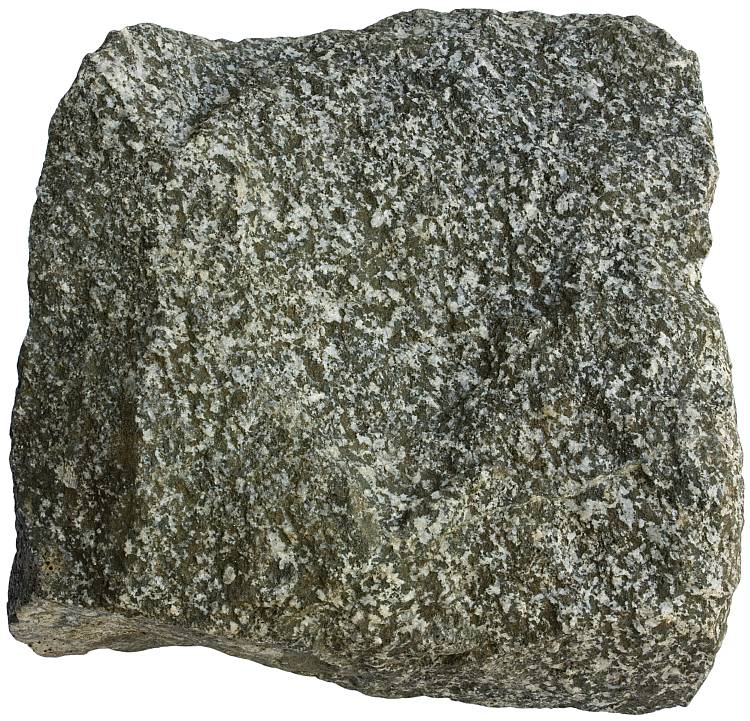
Norite. Napp, Flakstadøya, the Lofoten Archipelago, Norway. Width of sample 11 cm.
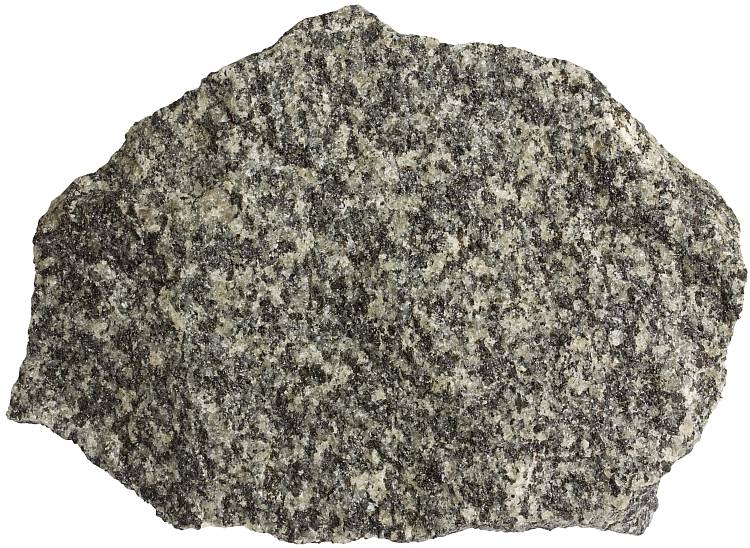
Leucocratic norite (orthopyroxene gabbro). Rogaland, Norway. Width of sample 11 cm.
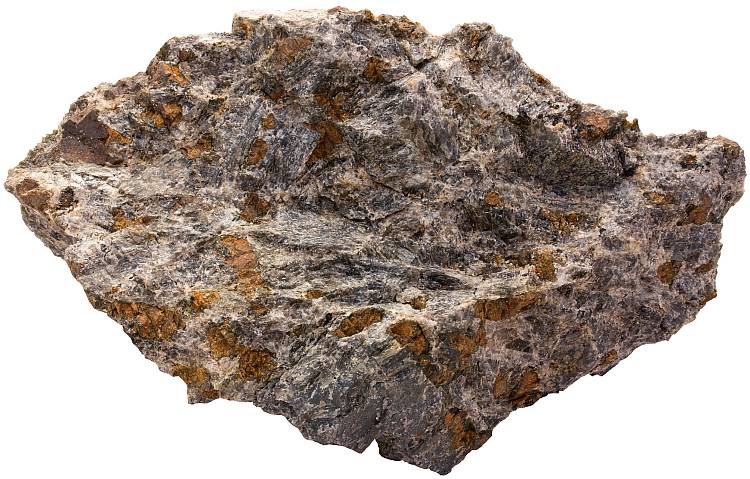
Troctolite is a variety of gabbro which contains almost no pyroxene. Gray is plagioclase, orange is weathered olivine (iddingsite). Flakstadøya, the Lofoten Archipelago, Norway. Width of sample 15 cm.
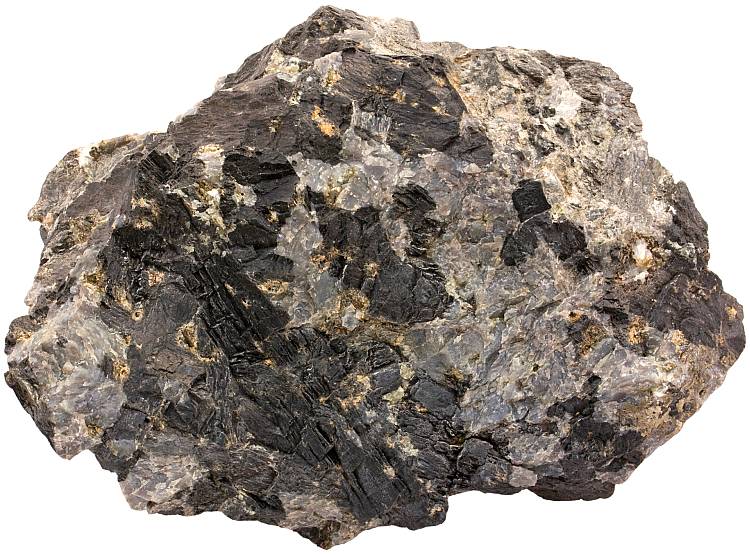
Hornblende gabbro pegmatite. This rock was originally normal gabbro, but it has been metamorphosed by hot fluids that altered augite to similar but hydrated silicate mineral hornblende. Tappeluft, Norway. Width of sample 9 cm.
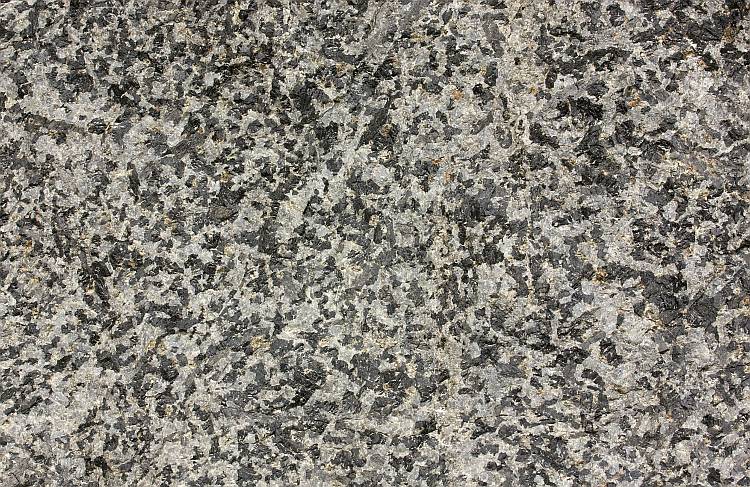
Hornblende gabbro (metagabbro) with finer structure. Tappeluft, Norway. Width of view 35 cm.
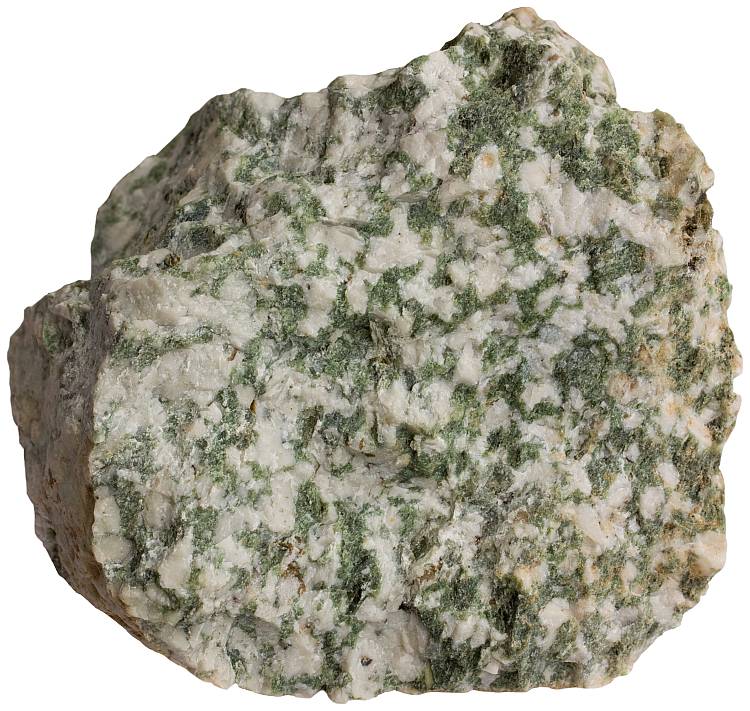
Tremolite-scapolite rock. The source rock was probably gabbroic, but it has been severely altered to its current form which is composed of tremolite-actinolite series amphibole and framework silicate scapolite. Storås, Norway. Width of sample 8 cm.
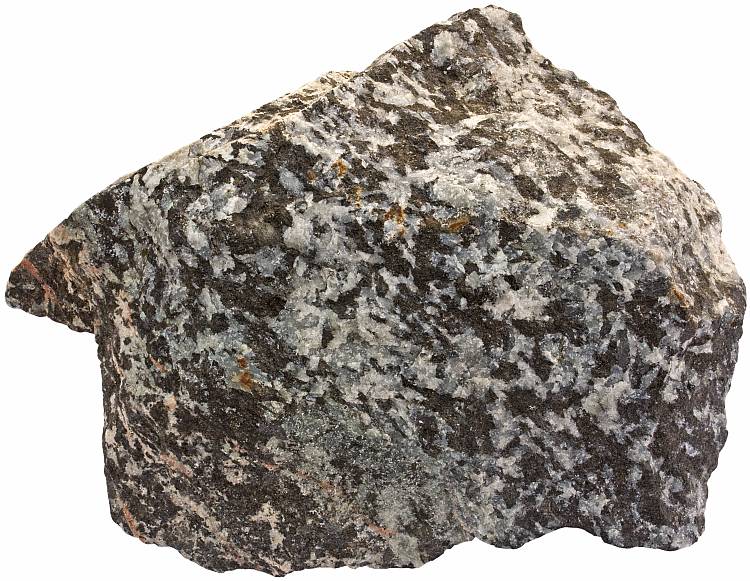
Hornblende-scapolite (marialite) rock. Metamorphosed gabbro again. Originally the rock was composed of plagioclase and pyroxene. The former was altered to scapolite and the latter to hornblende. Ødegården Verk, Norway. Width of sample 13 cm.
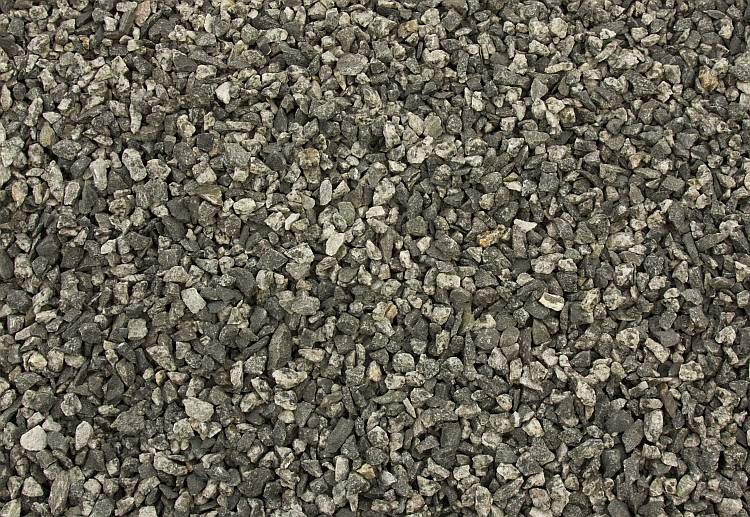
Gabbroic rocks are very hard and therefore suitable material for aggregate making. Picture taken in a gabbro quarry in southeastern Norway. Width of view 50 cm.
References
1. Le Maitre, R. W. (2005). Igneous Rocks: A Classification and Glossary of Terms: Recommendations of the International Union of Geological Sciences Subcommission on the Systematics of Igneous Rocks, 2nd Edition. Cambridge University Press.
what is the composition of an Gabro Sand rock?
What do you actually mean? Chemical composition of an average gabbro?